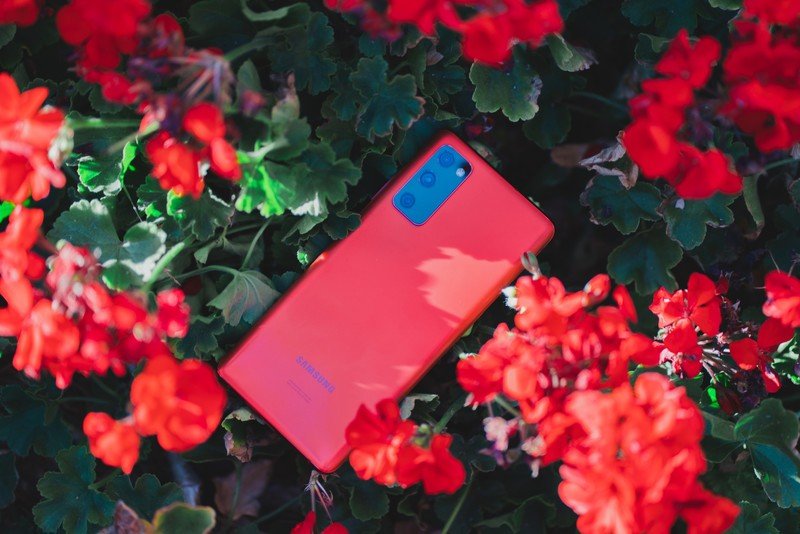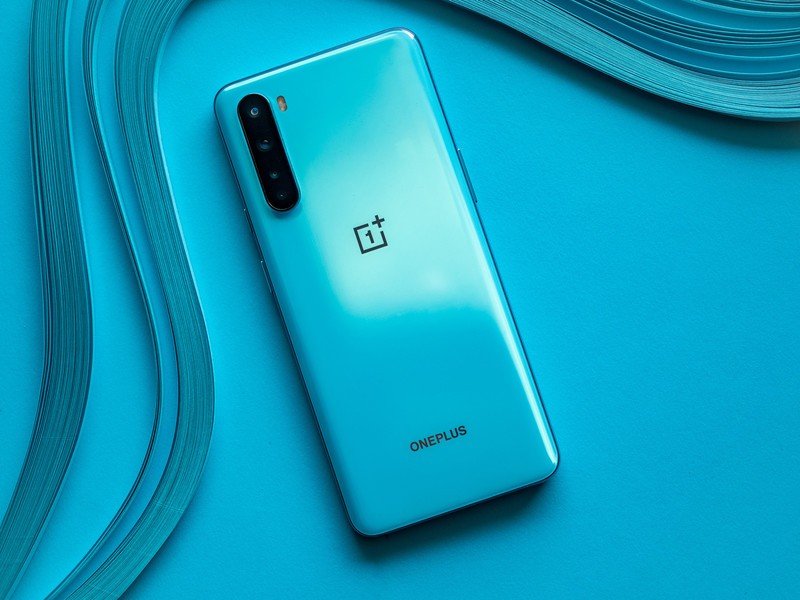Why 2020 made cheap phones good again

Now that the year is blissfully coming to an end, I don't want to spend too much time rehashing the toxic hellscape that was 2020. I also really hate it when people try to find "silver linings" from truly awful circumstances. Let's face it, the pandemic, social unrest, political upheaval, and economic downturn absolutely pummeled us all this year. However, as I sit here writing for an Android blog, it is pretty hard to ignore that despite all of the bad things that transpired this year, at least one consumer-facing benefit has come out of it — more good phones at (relatively) lower prices than ever before.
Some kudos are certainly due to the smartphone manufacturers who saw the collective writing on the wall, read the room, and realized that most customers were not going to fork up $1,000 or more on new phones this year. So what did they do? They introduced a number of models that were squarely in the "affordable" range and gave those phones features that we'd come to expect from many higher-priced devices. Now, I am not naive, and I realize that many of these efforts were set in motion well before the pandemic and its related calamities took hold. But it is clear that improving the best cheap Android phones, mid-range, and "value" best Android phones was something the industry as a whole committed to in 2020.
To quote YouTube sensation and smartphone expert Marques Brownlee, better known as MKBHD: "Cheap phones are getting good. And good phones are getting cheap."
Cheap phones are getting good. And good phones are getting cheap.Cheap phones are getting good. And good phones are getting cheap.— Marques Brownlee (@MKBHD) October 28, 2015October 28, 2015
This is something that Marques has been saying for over five years now, but I feel like never has it been more true than in this mess of a year we call 2020. In fact, this observation as it relates to 2020 just might be one of the bright spots in a dark year. But why might this ring so true this year, in particular? Well, I have a few theories, but I think it more than anything it comes down to phone manufacturers "reading the room" on the economic climate, and adjusting their pricing, build of materials, and support accordingly.
Cheaper materials

One of the more obvious ways that Android OEMs cut costs in 2020 was by moving some of their new releases away from the expensive and fragile glass and metal sandwiches toward cheaper, stronger, and often lighter materials. Four of our top phones of 2020 — the Samsung Galaxy S20 FE, Google Pixel 4a and 4a 5G, and Pixel 5 — featured either plastic, "glasstic," or aluminum construction, and those four spanned the range of this growing tier of affordable or value flagships. That $350-$400 to $700 range also included great new devices with plastic casings from the likes of TCL, Motorola, and even OnePlus.
Even Apple rejoined the party early in the year with its mid-range iPhone SE (2020), as well as what you could rightfully call a value flagship, the iPhone 12 Mini. In Apple's case, its material savings didn't come from ditching the glass and aluminum construction, but in reusing an old design and chassis. Regardless, the SE was not only a sleeper hit; it was Apple's cheapest new phone to date.
Cheaper chips

In late 2019 Qualcomm gave us a glimpse of its revolutionary Snapdragon 865 chips with 5G radios built-in. But as is often the case with first-gen or groundbreaking technology like this, the chips were on the pricey side. This resulted in what many have dubbed the "5G tax," in which those additional expenses get passed down from the OEMs and carriers to the consumer.
Get the latest news from Android Central, your trusted companion in the world of Android
The 5G tax was a real concern for many smartphone consumers in 2020.
Case in point, the 2019 Galaxy S10+ flagship retailed for $999 at release, whereas 2020's updated S20+ with a 5G chip retailed for $1,199 — a $200 increase, most of which was attributed to the new 865 chip. Similar examples could be found across the industry, with companies like OnePlus and LG increasing the prices of their respective flagships largely because of the new chips.
On the positive side, what this 5G tax did do was open the door for Qualcomm and Mediatek to release chips below the 865, such as the Snapdragon 765 series and Dimensity 1000c, that were less expensive but still performed most tasks at flagship levels. Combined with the less expensive materials previously mentioned, these chips allowed for the creation or expansion of a more affordable tier of performance phones. Many devices that were considered top-tier flagships with top-tier SOCs in 2019 morphed into 2020's new value flagships. Phones like the Google Pixel 4a 5G and Pixel 5, LG Velvet and LG Wing, Nokia 8.3, Moto Edge, and OnePlus Nord all opted to use the cheaper 765G series, passing those savings on to the consumers. The LG Velvet also shipped a variant with the Mediatek Dimensity 1000c chip, and I wouldn't be surprised to see more mid-tier phones releasing similar versions in 2021.
As the dominant chip manufacturer, Qualcomm saw increased competition on the high end from Apple's impressive A series chips, and in the mid-and low-range from Mediatek, which seemed to squeeze the giant chipmaker a bit. But what's uncomfortable for Qualcomm appears to be good for the consumer, for now.
Better software support

Companies like Apple and Google have been the standard-bearers for long-term software support, with the former supporting iPhones for as many as five years, and the latter updating Pixels for up to three years. Not only do efforts like this make the phones more user-friendly, but they help consumers essentially amortize the costs of their phones over a longer period of time. The longer you can keep your phone, the less it costs per month or year, which means that many people could justify getting a more expensive phone.
In 2020 Samsung and OnePlus joined Apple and Google in offering at least three years of platform updates and support.
In 2020, we began to see more Android OEMs like Samsung and OnePlus commit to supporting their phones for two or even three platform updates. Not only does this make their lower-priced phones like the Galaxy A series or the Nord series more compelling, but it means that year-old devices like the Galaxy S10 line or the OnePlus 7 series are still a good value for consumers. After all, you can get a new Galaxy S10+ or OnePlus 7T for hundreds less than last year when they were actually new while knowing that you'll be able to count on at least two more platform updates. That's a big win for Android consumers.
Even sustainable phone manufacturer Fairphone announced a partnership with /e/OS to allow its customers with Fairphone 3 and 3+ models to download and run the privacy-focused Android fork on their devices. This has the benefit of extending the usable life of a mid-range phone that shipped with Android 10 but that is intended to be updated, upgraded, and repaired for years.
Remote repairs

It used to be that if/when you cracked the screen of your smartphone or experienced some other kind of physical damage or software problems, you had to bring it into a physical store like Best Buy or some strip mall fix-it store. Alternatively, you could mail it to the manufacturer or third-party repair company and be without it for days or weeks at a time. Not many people are going into physical repair shops or stores right now, though, and I don't anticipate that changing much in the short-term.
Affordable mobile repairs benefit smartphone buyers at all price points.
However, in part due to market demands and public health concerns, there are companies like Asurion and Ubreakifix that will now come to you. Like mobile auto detailing, windshield repair, or engine service, you can get someone to come and fix your phone's cracked screen or body.
What does this have to do with cheaper phones? I would argue that it gives more of us an incentive to purchase cheaper phones, knowing that we can still get them repaired affordably and conveniently. I never seriously considered a mid-ranger before because I wasn't confident that it would be worth it to repair if I dropped it on the concrete. With more affordable and accessible repair services, that's one fewer barrier to me purchasing a cheaper phone.
Your thoughts?

Like my colleague Ara Wagoner, I've opted to use the Google Pixel 4a since it came out, with practically no regrets. What about you? Did 2020 make you consider a less expensive phone than you may have in years past? If so, which device did you get?

Jeramy was the Editor-in-Chief of Android Central. He is proud to help *Keep Austin Weird* and loves hiking in the hill country of central Texas with a breakfast taco in each hand.
